ANEFA’s job search metasearch engine
Designed at Hippocampe for ANEFA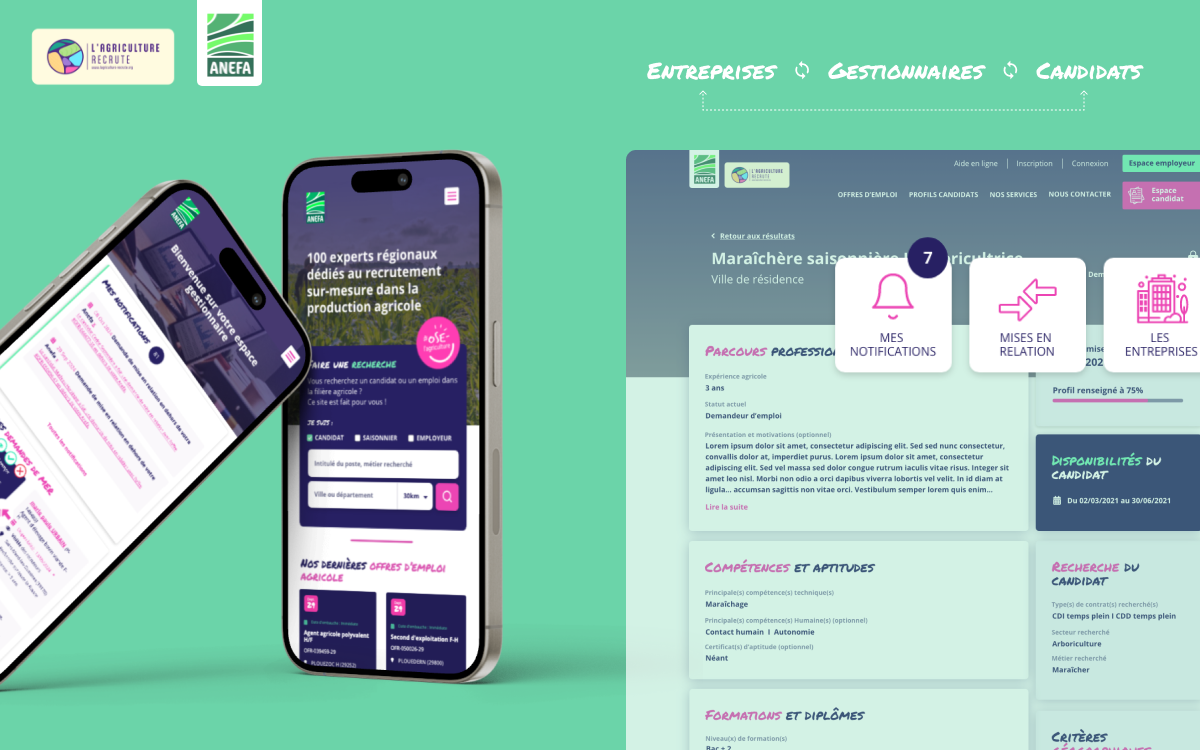
Overview
The National Association for Employment and Training in Agriculture (ANEFA), a key player in promoting agricultural careers, manages L’Agriculture recrute, a leading platform in France for connecting recruiters and candidates in the agricultural sector. With over 9,000 job offers published annually and 38,000 candidate profiles, this platform facilitates more than 43,000 connections between recruiters and job seekers, supported by a network of 100 local managers.
The existing platform had several major limitations. Its architecture was not designed to handle a high volume of data or provide a smooth and intuitive experience. Users—including candidates, employers, and managers—faced various challenges: slow navigation, an unappealing design, and complex user journeys. These issues hindered the efficiency of the matchmaking process, creating friction at every stage.
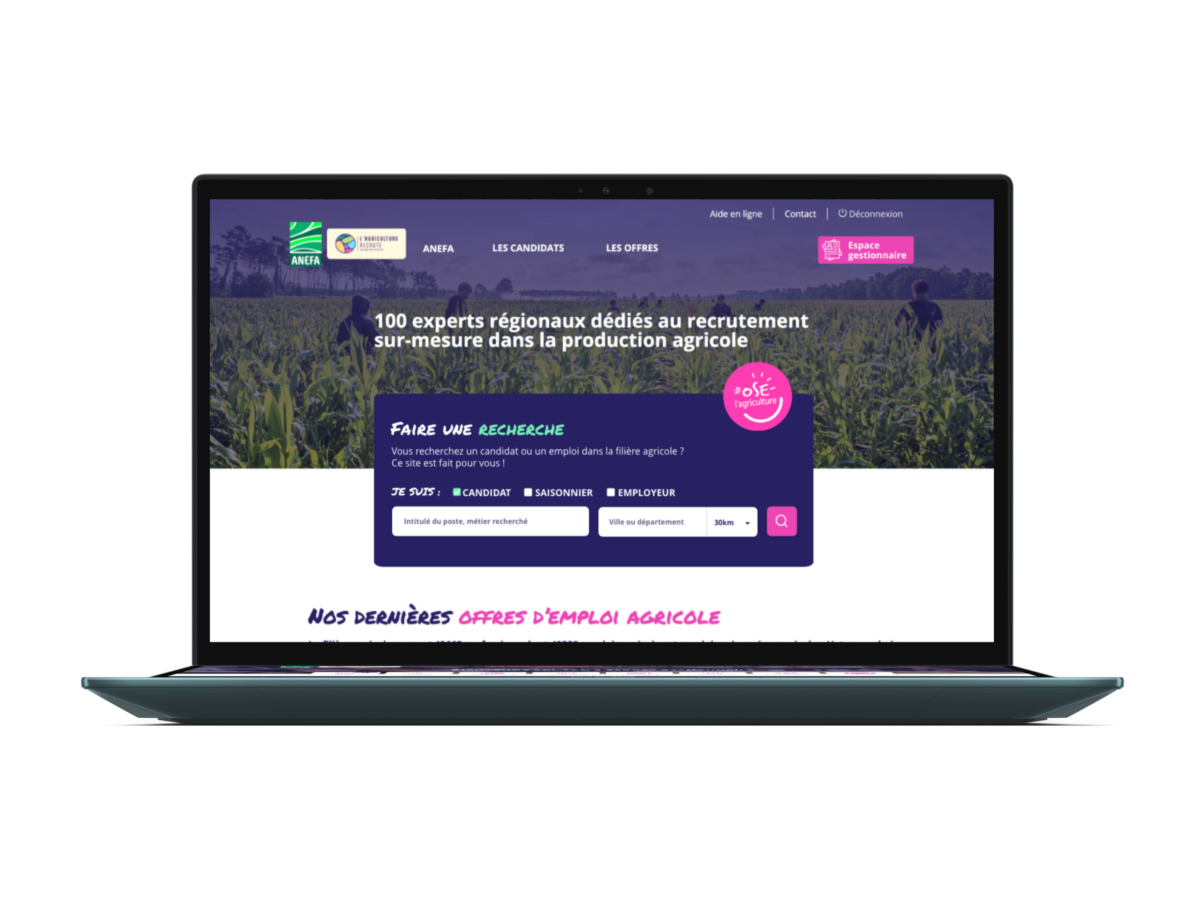
Problem
How can we rethink and revitalize the recruitment process in the agricultural sector by making the leading job platform more attractive, seamless, and efficient, while overcoming challenges related to the perception of agricultural careers?
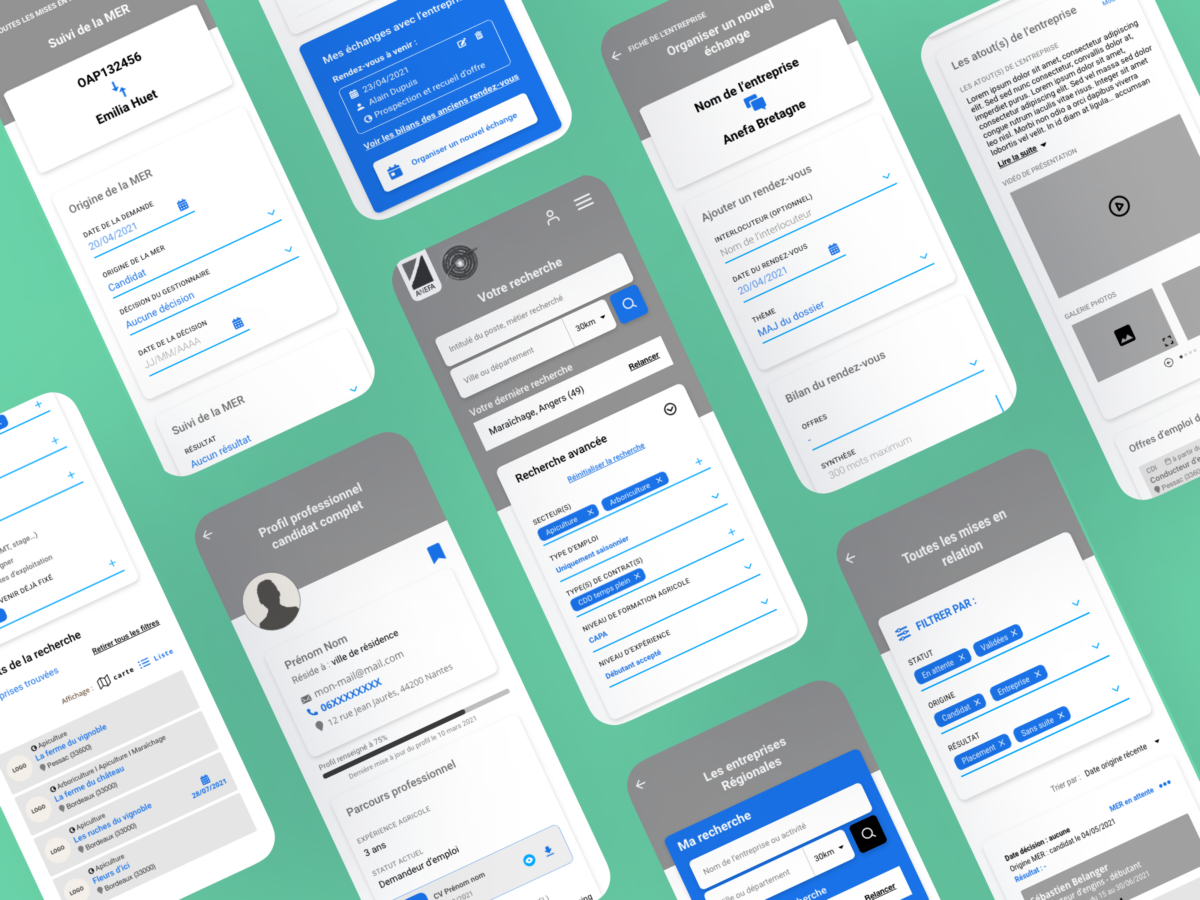
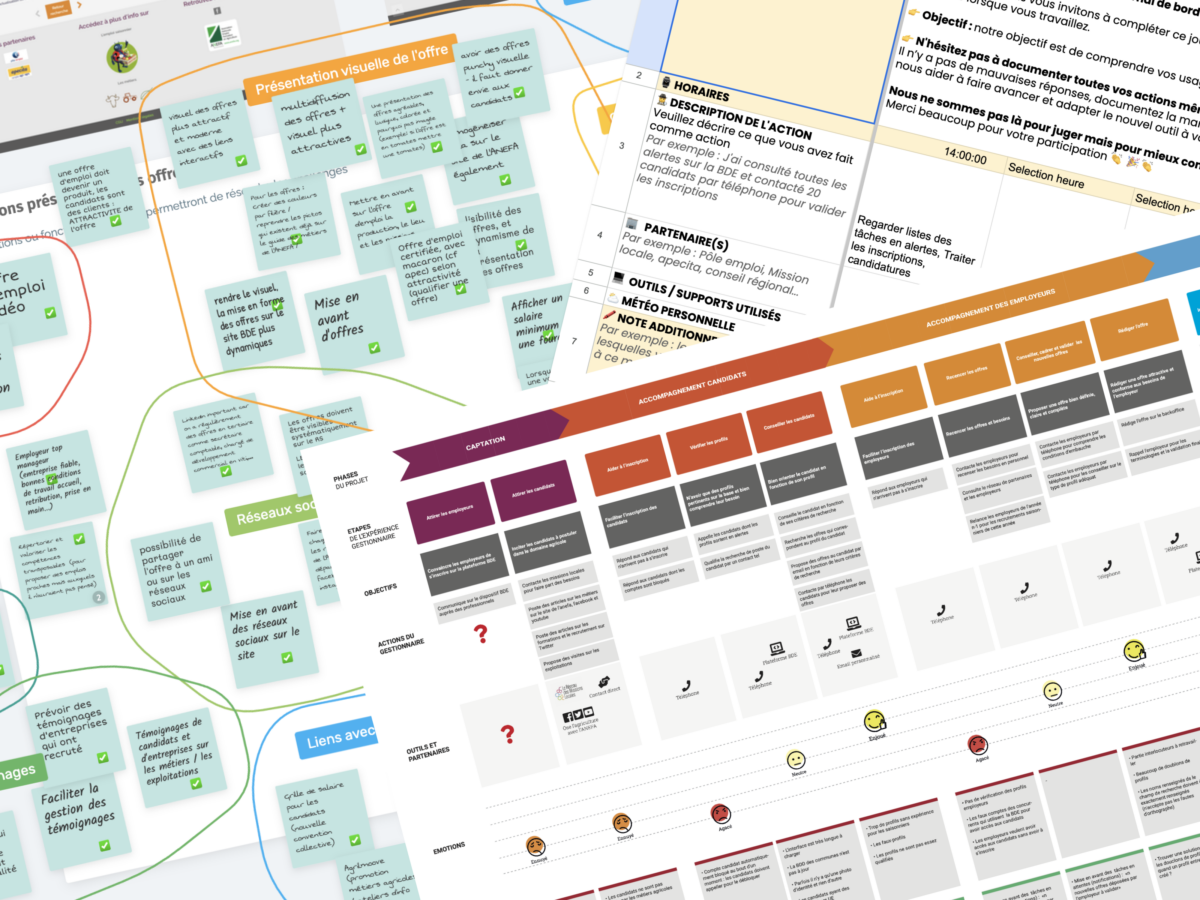
Design process
During an initial discovery workshop, we gained an understanding of the platform’s overall functionality, allowing us to identify key user profiles and essential KPIs. Once the various user panels were established, we initiated the understanding and empathy phase through dedicated workshops.
A series of interviews, surveys, and user diaries refined our understanding of behaviors, habits, and pain points, which we then explored further during workshops.
At the same time, design review sessions of the initial platform, conducted with various user profiles, highlighted the key pain points that needed to be addressed in the redesign process.
The wireframes and high-fidelity prototypes took shape iteratively through workshops and consultations.
The choices of typography, colors, and the overall layout of the platform were guided by the group’s existing brand guidelines. This required us to work within a defined visual framework while striving to optimize the user experience within these constraints.
All design work was balanced against the available budget, requiring compromises to ensure efficient progress.
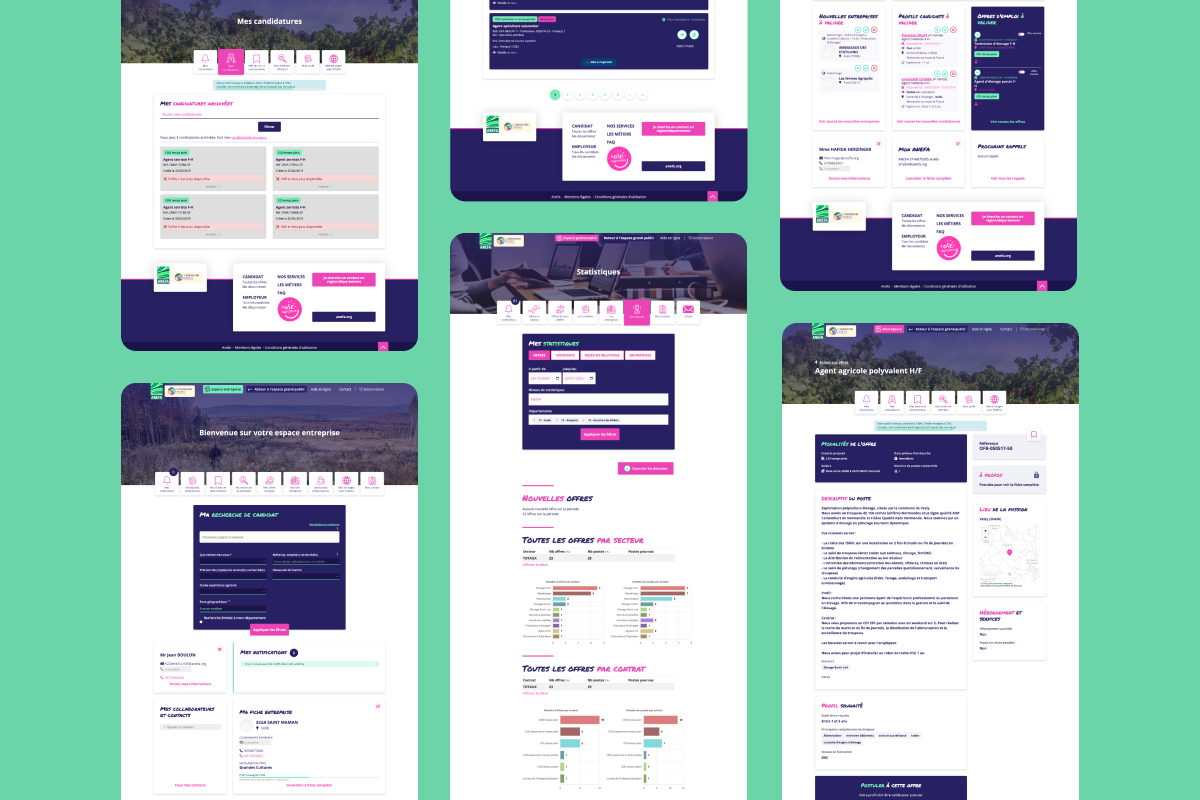
Solutions
Several optimizations were implemented to improve the platform for managers. Time-consuming tasks were automated, making daily operations more efficient. A more precise matching tool with advanced filters now refines candidate searches automatically.
A transferable skills repository helps suggest relevant job opportunities, while geolocated job listings and an enhanced route calculator improve profile filtering. Additionally, automated dashboards enhance statistical analysis, and the redesigned CV upload workflow, along with inactive profile cleanup, has significantly boosted platform performance.
On the candidate side, several improvements have been introduced to enhance engagement and usability. A dedicated profile page with a progress indicator helps users complete their information efficiently. The implementation of appointment reminders, contact options, and job alert subscriptions encourages ongoing interaction and increases visit frequency on the platform.
Additionally, highlighting working conditions within company profiles allows candidates to better envision their potential workplace. The inclusion of information on available accommodations, services, and possible financial aid further facilitates the decision-making and application process.
On the recruiter side, the redesign of the job posting workflow simplifies the drafting and publishing process, making it more intuitive and efficient.
Additionally, the implementation of notifications streamlines candidate-recruiter interactions, facilitating smoother and more timely connections.
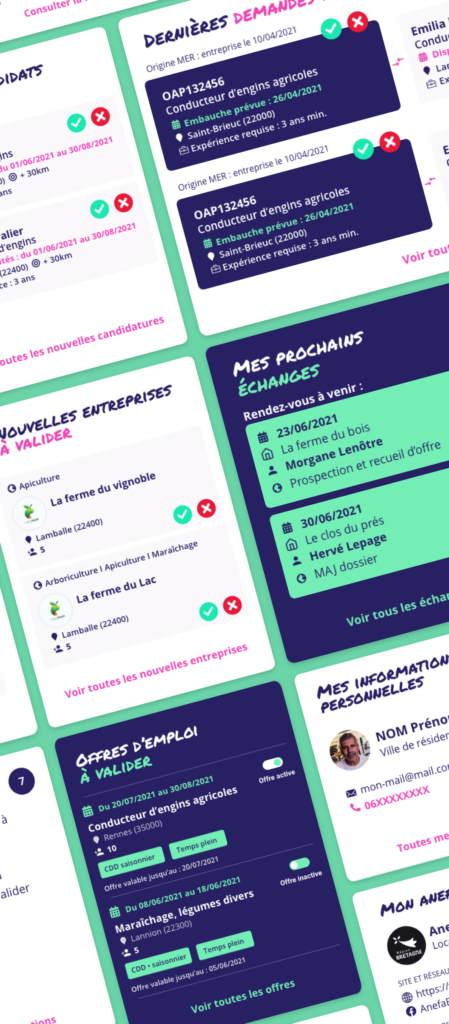
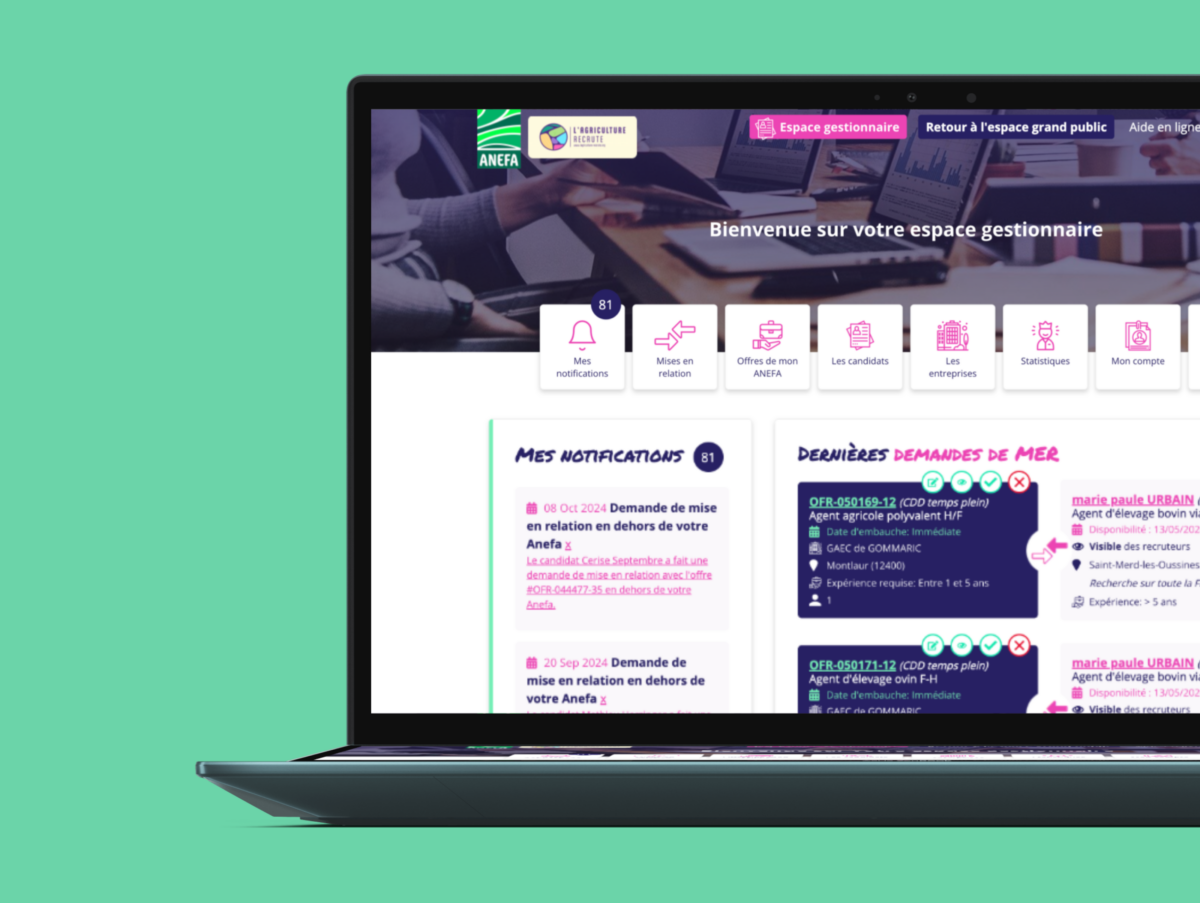
Insights
The project required balancing automation and personalization, leading to key compromises across different user profiles.
For managers, automation was crucial for efficiency, but manual validation remained necessary to ensure high-quality job postings and build trust, despite adding friction.
For recruiters, the challenge was to streamline job postings without compromising content quality. An agile input process was developed to maintain engagement while preserving clarity.
For candidates, especially seasonal workers, meeting specific needs like housing and mobility was complex due to budget constraints. Prioritization was essential to implement key features while optimizing available resources.
Overall, the project required careful trade-offs to align user expectations with technical and financial constraints, ensuring a functional and effective platform.